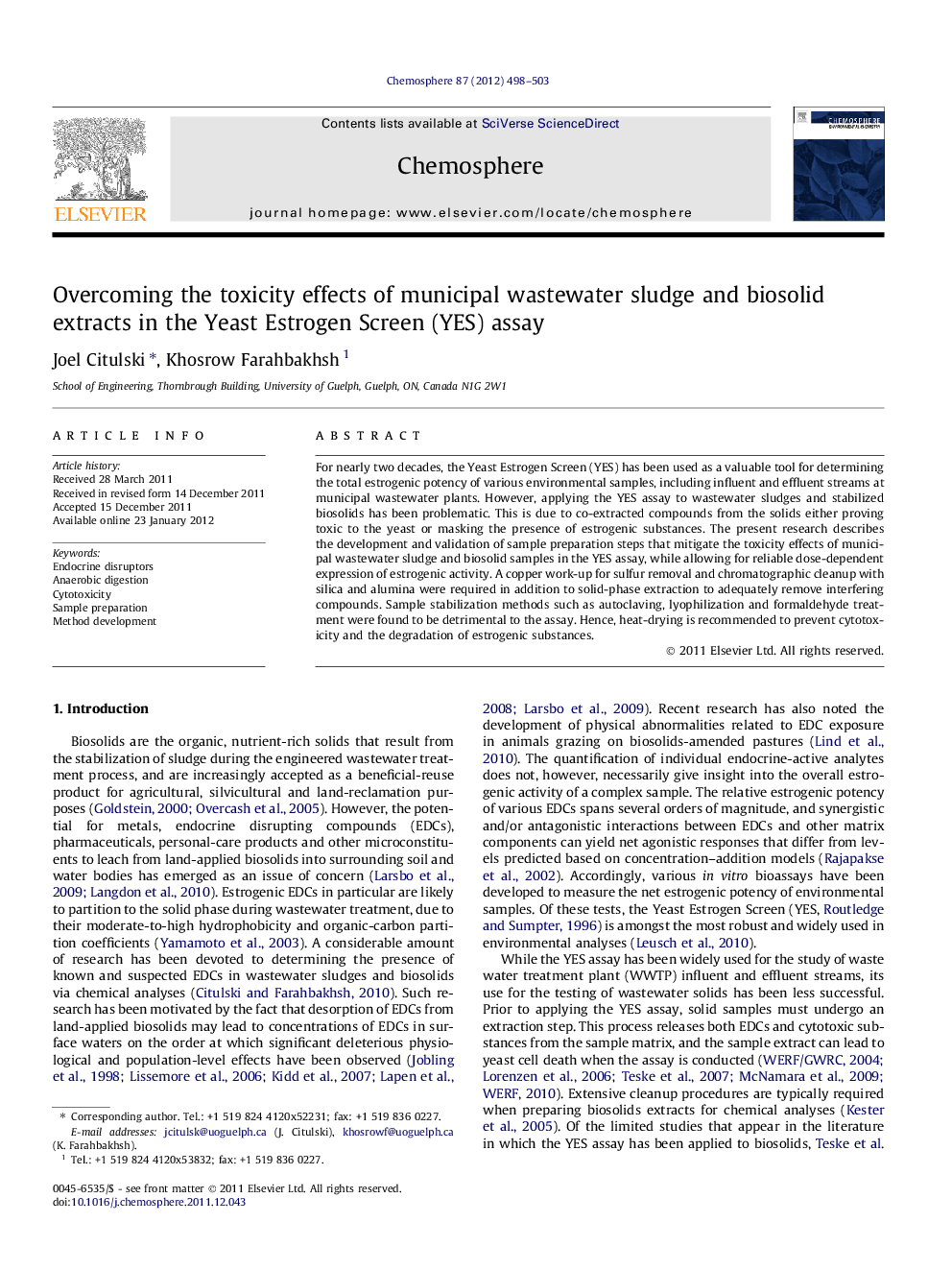| Article ID | Journal | Published Year | Pages | File Type |
|---|---|---|---|---|
| 4410219 | Chemosphere | 2012 | 6 Pages |
For nearly two decades, the Yeast Estrogen Screen (YES) has been used as a valuable tool for determining the total estrogenic potency of various environmental samples, including influent and effluent streams at municipal wastewater plants. However, applying the YES assay to wastewater sludges and stabilized biosolids has been problematic. This is due to co-extracted compounds from the solids either proving toxic to the yeast or masking the presence of estrogenic substances. The present research describes the development and validation of sample preparation steps that mitigate the toxicity effects of municipal wastewater sludge and biosolid samples in the YES assay, while allowing for reliable dose-dependent expression of estrogenic activity. A copper work-up for sulfur removal and chromatographic cleanup with silica and alumina were required in addition to solid-phase extraction to adequately remove interfering compounds. Sample stabilization methods such as autoclaving, lyophilization and formaldehyde treatment were found to be detrimental to the assay. Hence, heat-drying is recommended to prevent cytotoxicity and the degradation of estrogenic substances.
► We developed a method that overcomes biosolid toxicity in the Yeast Estrogen Screen. ► Biosolid preservation methods may increase sample toxicity in the YES assay. ► With cleanup biosolid samples consistently exhibited dose-dependent estrogenicity. ► Net estrogenicity of wastewater solids increased during anaerobic digestion. ► Net estrogenicity of digested biosolids was lower than reported in earlier studies.
